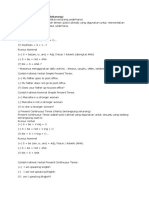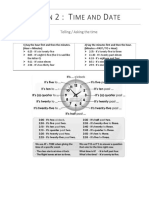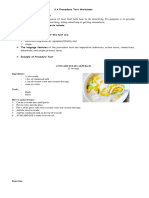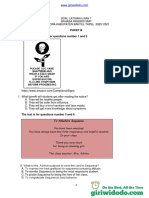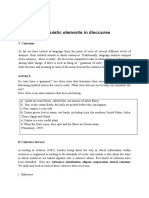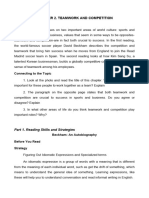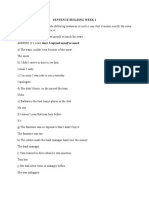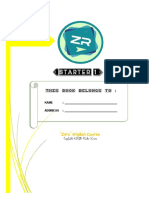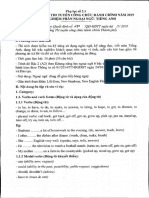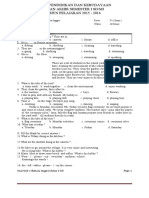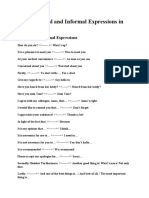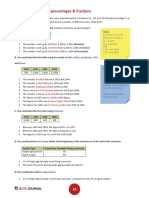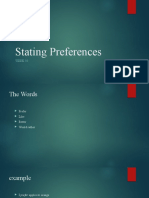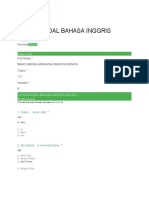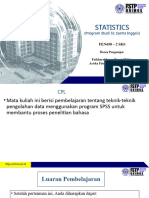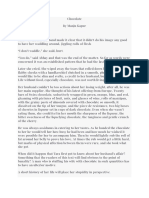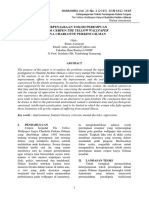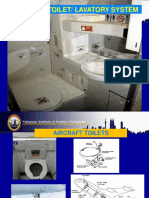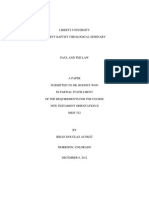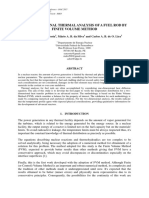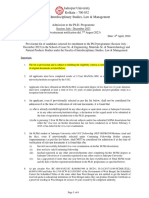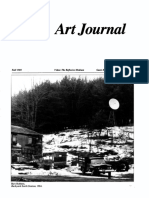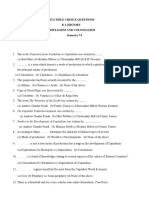Hand Book
Basic Listening
Compiled by : Diana Hardiyanti, M.Hum
English Literature Study Program
Faculty of Foreign Language and Culture
Unimus
2021
� Introduction
The International Phonetic Alphabet (IPA) is a system of phonetic notation devised by
linguists to accurately and uniquely represent each of the wide variety of sounds
(phones or phonemes) used in spoken human language.
The IPA was first published in 1888 by the Association Phonétique Internationale
(International Phonetic Association), a group of French language teachers founded by
Paul Passy. The aim of the organisation was to devise a system for transcribing the
sounds of speech which was independent of any particular language and applicable to
all languages.
Usage
• The IPA is used in dictionaries to indicate the pronunciation of words.
• The IPA has often been used as a basis for creating new writing systems for
previously unwritten languages.
• The IPA is used in some foreign language text books and phrase books to
transcribe the sounds of languages which are written with non-latin alphabets.
It is also used by non-native speakers of English when learning to speak English.
• Each symbol represent the sound , each words are composed of sound(s)
1
�2
�UNIT 1
/i:/ sheep
3
�Practice :
Using the menu, practise in a group of four people : one become the waiter and the other
become the customer
4
�Unit 2
/ I / ship
First practice the sound / i:
/ then open your mouth a
litlle more.
/ I / is a short sound
5
�6
�Unit 3
/ e/ pen
First practice the sound / I /
then open your mouth a litlle
more.
/ e/ is a short sound
7
�8
�Unit 4
/æ / man
First practice the sound / e /
then open your mouth a
litlle more.
9
�10
�11
�Unit 5
/ ᴧ / cup
First practice the sound / æ /
then put your tongue back a
little.
/ ᴧ / is a short sound
12
�13
�14
�Unit 6
/ a : / heart
Put your tongue down and
back.
/ a : / is a long sound
15
�16
�17
�Unit 7 Review
18
�Unit 8
/ɒ / clock
First practice the sound /æ/ then
put your tongue slightly back
and bring your lips slightly
forward .
/ɒ /is a short sound
19
�20
�Unit 9
/ɔ:/ ball
First practice the sound ɒ then
put the back of your tongue up
a little.
/ɔ:/ is a long sound
21
�22
�23
�Unit 10
/ʊ/ book
First practice the sound /ɒ/ then
put the back of your tongue
forward and up a little
/ ʊ / is a short sound
24
�25
�Unit 11
/u:/ book
First practice the sound / ʊ / Then
put your tongue up and back
/ u:/ is a long sound
26
�27
�Unit 12
/ɜ:/ girl
First practice the sound / ɔ: /
Then put your tongue forward
and up a little
/ɜ:/ is a long sound
28
�29
�30
�31
�Unit 13
/ ə / a camera
First practice the sound / ɜ: / This
is a long sound, then make it
very short .
/ ə / is a very short sound
32
�33
�34
�Unit 14
Review
35
�Unit 15
/eI / tail
This has two sounds : e and I
First make the sound e
Now make it longer : eee
Then add I
This is very short eeeI
36
�37
�Unit 16
/aI / fine
This has two sounds a: and I
First make the sound a:
This is a long sound
Then add I
This is a short eeeI
38
�39
�Unit 17
/ɔI / boy
This has two sounds ɔ: and I
First say ɔ:
Now make it longer ɔɔɔ
Then add I
This is very short ɔɔɔI
40
�41
�Unit 18
/aʊ / house
This has two sounds
First make practice the sound æ
Now add ʊ.
This is very short /aʊ/
42
�43
�Unit 19
/əʊ / phone
(B54 abc)
This has two sounds ə and ʊ
First say ə
Now make it longer əəə
Then add ʊ.
This is very short əəəʊ
Minimal pair words (B55, B56)
44
�f. Tick the words a, b, c, that you hear in the sentences (B60)
3. Dialogue (B61)
Listen to the the /əʊ / words in the dialogue
45
�Unit 20
/Iə/ year
(B63 abc)
First practice the sound I
Then make the sound ə
Join the sound IIIə
1. MINIMAL PAIR (B64ab)
You will hear five words from each minimal pair. For each word, write 1 for /i:/ or 2 for /Iə/
Example pair 1 : 2,1,1,2,2
2. Minimal pair Sentences (B65)
Listen to the sentences, and write 1 for /i:/ or 2 for /Iə/
3. Dialogue
a. Read aloud : (B67)
46
�b. Listen and fill the gap.
A bearded Mountaineer
4. The letter ‘r’ – pronounced or silence ? (B68, B69)
47
�Unit 21
/eə/ chair
(B70 abc)
First practice the sound /e/
Then make the sound ə /ə/
Join the sound eeeə
1. Minimal Pairs (B71)
You will hear five words from each minimal pair. For each word, write 1 for /Iə/or 2 for /eə/
Example pair 1 : 2,2,1,1,2
2. Minimal pair Sentences (B72a, B72b)
Listen to the sentences, and write 1 for /Iə/or 2 for /eə/
48
�Dialogue
A pair of hairclips
49
�Unit 22
Section B : Consonants
50
�51
�Unit 23
/p/ pen
Sound /p/ (B79)
Dialogue (B80)
Passport Please
52
�Stress and Intonation
53
�Unit 24
/b/ baby
(B83 abc)
Use your voice to make /b/
--Are those people backpackers? ... They’ve got packs on their backs.
-But they aren’t .... travelling. They’ve just been shopping and they’re waiting for a bus or a
cab.
-So does that mean they aren’t backpakers? They’re just....er... people with backpacks.
-Mmmm
1. Minimal Pair Words (84 ab)
Listen and repeat. You will hear five words from each minimal pair. For each word, write
1 for /p/or 2 for /b/. Example pair 1 : 2,2,1,2
2. Minimal pair Sentences (B85)
Listen to the minimal pair sentences. Than, listen to the 6 sentences and write 1 for /p/or 2
for /b/
B86
54
�Word stress (B88, B89)
55
�56
�Unit 25
/t/ ten
(B91 ab)
First, put your tongue behind your top teeth.
Then push air forward inside your mouth .
Then quickly move the tip of your tongue
away from tour teeth to release the air
suddenly. Don’t use your voice. Listen and
repeat /t/
what forget doesn’t breakfast minute minutes it’s exactly
1. Sound (B92ab)
57
�58
�Unit 26
/s/ sun
(disk 3 .U30)
Touch your side teeth with the side of your
tongue. Put your tongue forward. Do not use
your voice
59
�60
�Unit 27
/z/ zoo
(disk 3 .U31)
First practise /s/ use your voice to make /z/
61
�62
�Unit 28
/ ʃ / shoe
(disk 3 .U32)
First practise /s/ use your voice to make /z/
63
�64
�Unit 29
/ ʒ / television
(disk 3 .U33)
First practise /ʃ/ use your voice to make /ʒ/
65
�Unit 30
/ tʃ / cherry
(disk 3 .U34)
First practise /t/ and /ʃ/ .
Begin to make /t/ then slowly move your
tongue from the roof of your mouth
66
�67
�68
�Unit 31
/ w/ cherry
(U38)
First practise /u:/ . Make your lips round and
hard foe /w/
69
�70
�Unit 32
/ / thin
(U41)
Put your tongue between your teeth. Blow out
air between your tongue and your top teeth
71
�(Menit 2,49)
72
�Unit 33
/ ð/ the feather
(U42)
Use your voice to make /ð/
73
�74
�75
� Daftar Pustaka
Baker, A. (2006). Ship Or Sheep? Student's Book: An Intermediate Pronunciation Course (Vol. 1). Ernst
Klett Sprachen.
Baker, Ann. 1986. Sheep or Ship. London: Cambridge University Press.
Dale,Paulette. 2005. Pronunciation Made Simple. Longman
soundofspeech.uiowa.edu
https://www.teachingenglish.org.uk/article/phonemic-chart
http://www.antimoon.com/how/pronunc-soundsipa.htm
http://www.shiporsheep.com/
http://www.fonetiks.org/engsou5.html
76

